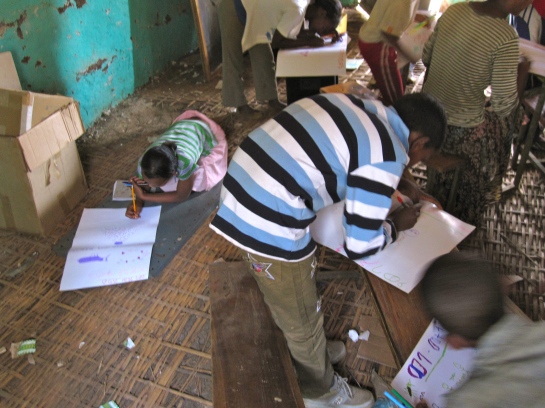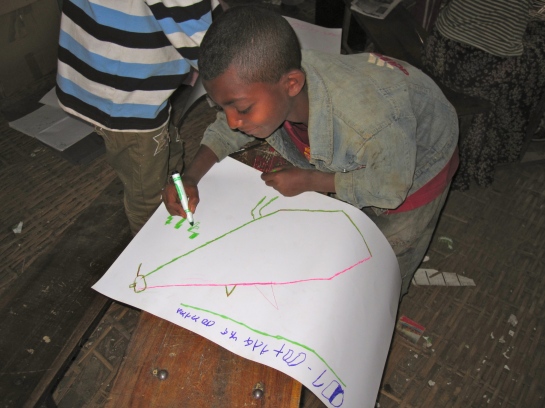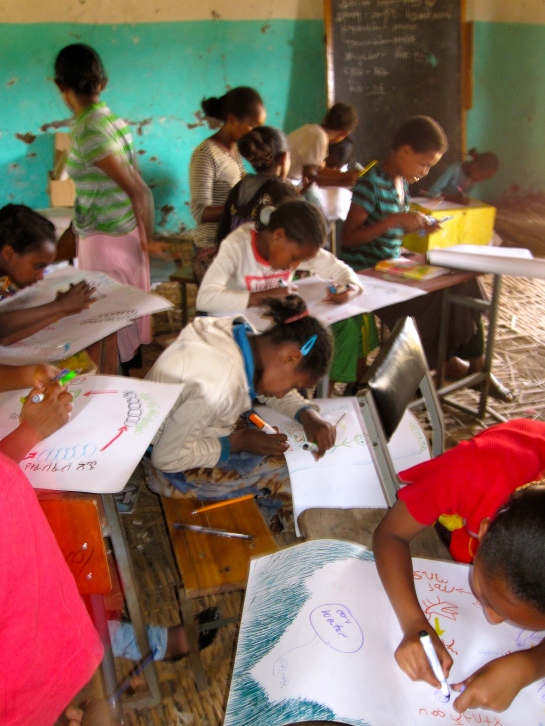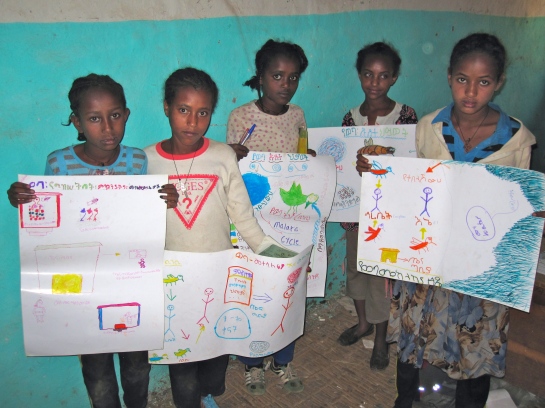Malaria – Transmission and Prevention
Between 250 and 500 million people contract Malaria every year. Of those infected, 1-2 million people die. Around 90% of deaths occur here in Sub-Saharan Africa. Most at risk are children and pregnant mothers.
Not only is April “Blog about Malaria Month”, it is also World Malaria Day on April 25. In order to increase awareness about Malaria I am working with the local students to advocate within our community (and now to you).
When I first tried to educate the youth about Malaria, it was difficult to portray how it’s transmitted. I realized it is important not to only understand the process but to educate on the social responsibility everyone has to each other. It is because of this I created an educational and interactive poster showing the transmission and prevention of Malaria.
What has been amazing is the reaction of people when they truly understand the process. With their eyebrows raised and eyes wide open, they quickly recognize the direct and indirect impact of their daily decisions. They learn how to keep their family healthy but just as important they learn how to prevent the spread of the disease to others: their neighbors, community and the world.
The title of the poster is in the local language, Amharic: Wuhba – Muh-tuh-la-luhf ina Muh-kuh-li-kuhl which translates to: Malaria – Transmission and Prevent
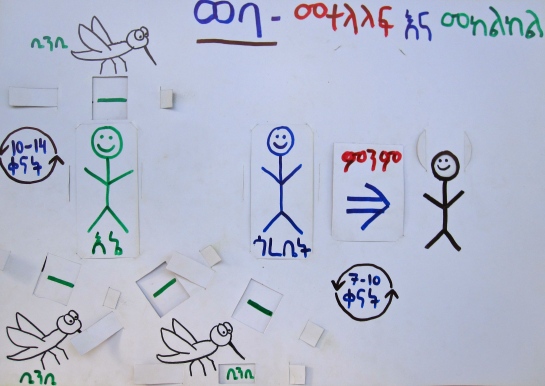 The first hurdle I had to overcome was the belief that all mosquitos have Malaria. This was difficult in the beginning since I wanted to make a poster in the local language using the correct words. After some time I was able to differentiate between a normal mosquito (Bin-bee) and mosquito with malaria (Wuhba tinin). As seen on the poster, the mosquitos with green writing next to them are the normal mosquitos. When demonstrating I don’t go into much detail of the type of mosquito but some of the students are really smart (Gobez) and know they are the Female Anopheles Mosquitos.
The first hurdle I had to overcome was the belief that all mosquitos have Malaria. This was difficult in the beginning since I wanted to make a poster in the local language using the correct words. After some time I was able to differentiate between a normal mosquito (Bin-bee) and mosquito with malaria (Wuhba tinin). As seen on the poster, the mosquitos with green writing next to them are the normal mosquitos. When demonstrating I don’t go into much detail of the type of mosquito but some of the students are really smart (Gobez) and know they are the Female Anopheles Mosquitos.
The green stick figure on the left is “I/me” (inne) and the blue is “neighbor” (gorabet). The stick figures are inter-changeable with slits on the poster to hold them in place. I switch the stick figures at the end of the demonstration and this is where people get an “ah ha” moment realizing the importance of prevention including the responsibility they have to educate their neighbors.
Steps in Transmission
- When the female mosquito (Bin-bee) bites and takes a blood meal, she injects a Plasmodium parasite that takes 10-14 days to develop in a human host.
- Thereafter, when other female mosquitos (Bin-bee) bite, they now contain the active form of the parasite, which cause Malaria.
- This “Malaria” mosquito (Wuhba), with red writing next to it, bites/takes a blood meal again, to the blue stick figure – the neighbor.
- Signs and Symptoms are shown 7-10 days after Malaria is contracted and if nothing is done can cause death.
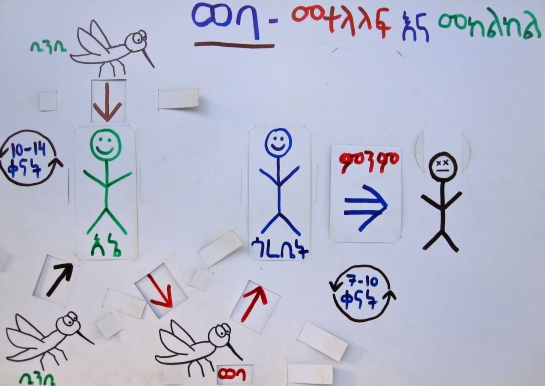
Prevention #1
Use a bed net (agobir). This prevents the first mosquito from biting, injecting the Plasmodium parasite and developing in a human host (me). This demonstrates an indirect relationship with the neighbor, preventing the development of Malaria and how I can prevent my neighbor from contracting the disease.

Taking it a step further and best case scenario; I have now educated my neighbor to use a bed net. This now prevents the spread of the disease even further. I have now shown concern for my neighbors’ health and got me thinking about how to change other habits to improve the health of others. Social Responsibility Achieved!

Prevention #2
Being aware of the Signs and Symptoms (Milikitoch) of Malaria. Most of the cases of death are due to not going to the health center (Tena Tabia) even though there is a cure for Malaria if treated in a timely manner. This tells them to watch out for symptoms and go to the doctor immediately thus staying healthy.
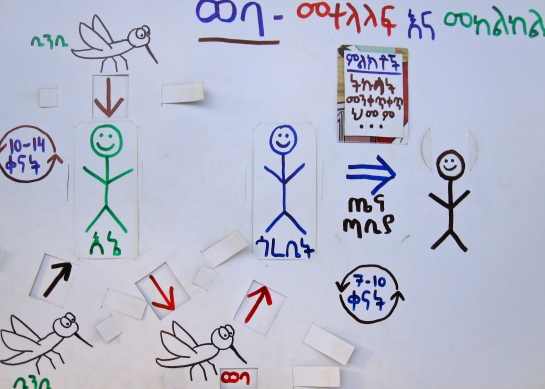
The end of the presentation is where I switch the green and blue stick figures. As discussed earlier, this shows the accountability everyone has for each other. Ultimately, I get to see the looks on their faces; a genuine reaction that they can and want to make a difference in their community.
Many people say, “Well, I don’t need a bed-net. I don’t get Malaria.” Now it’s not just to Prevent Malaria for themselves but to think of others and Reduce the Spread of Malaria!
 The Q & A was by far the biggest hit with the students. Addisu (the student next to the teacher on the left) found a Malaria article in a random news flyer and prepared a list of fun questions to ask the students. Some of the questions I didn’t even know the answer but ultimately it was to get the students talking about Malaria. For example, in what country was the world’s biggest bed net manufactured? How many children/students could fit under the world’s largest bed net?
The Q & A was by far the biggest hit with the students. Addisu (the student next to the teacher on the left) found a Malaria article in a random news flyer and prepared a list of fun questions to ask the students. Some of the questions I didn’t even know the answer but ultimately it was to get the students talking about Malaria. For example, in what country was the world’s biggest bed net manufactured? How many children/students could fit under the world’s largest bed net? Drama/skits are also another favorite here in Ethiopia. As you see here, children are literally on their toes, the shoulders of others or standing on benches in order to watch.
Drama/skits are also another favorite here in Ethiopia. As you see here, children are literally on their toes, the shoulders of others or standing on benches in order to watch.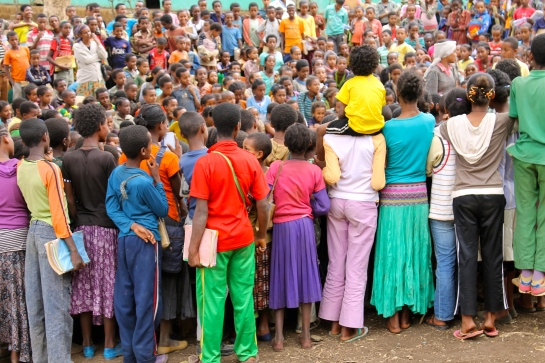 It was a successful day because of these students. Other students helped in preparing the materials but since it was a school day they couldn’t attend.
It was a successful day because of these students. Other students helped in preparing the materials but since it was a school day they couldn’t attend.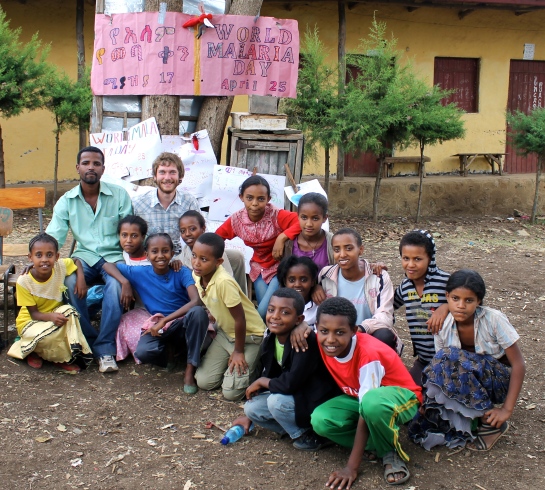 After the all day event with the students we picked winners and distributed prizes. The top three prizes were a shirt, hat and backpack. Other well-liked prizes included neon glow-stick bracelets and gum. Even with “winners” selected, each student received multiple prizes. Several days after the event I saw the students still wearing their bracelets and chewing their gum.
After the all day event with the students we picked winners and distributed prizes. The top three prizes were a shirt, hat and backpack. Other well-liked prizes included neon glow-stick bracelets and gum. Even with “winners” selected, each student received multiple prizes. Several days after the event I saw the students still wearing their bracelets and chewing their gum.
